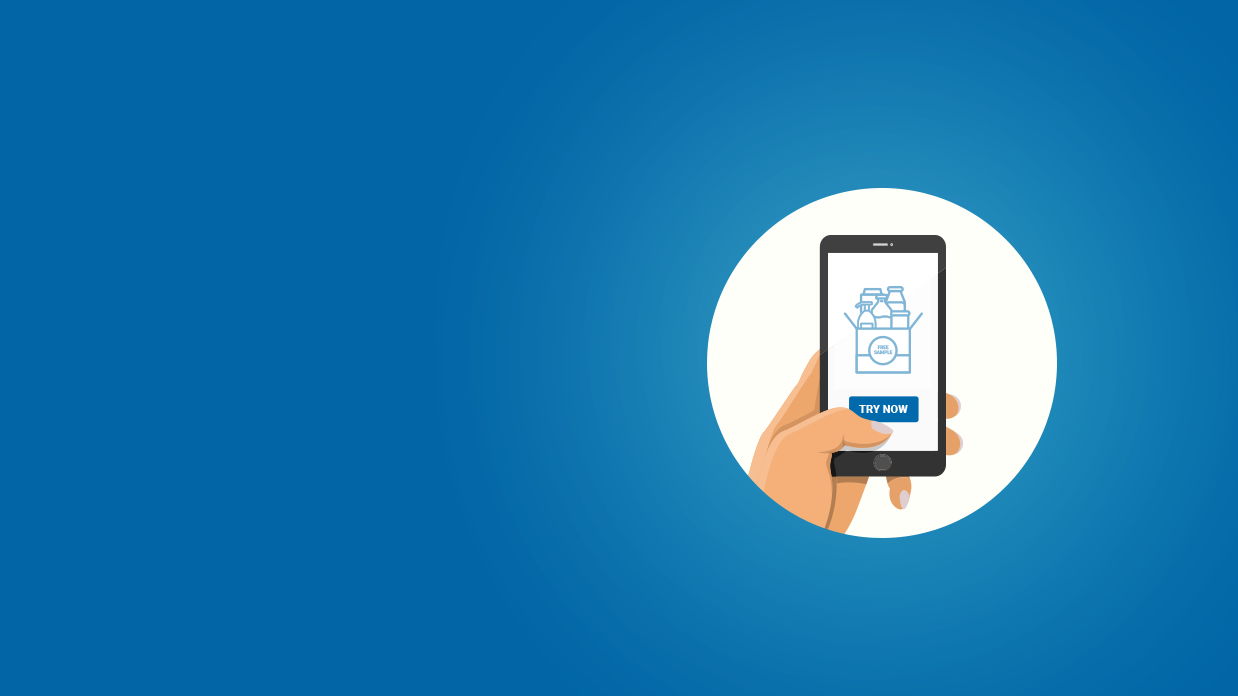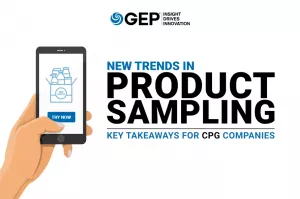The pandemic has hit the CPG sector hard. Discretionary spending has plunged — consumer sentiment, too. In-store foot traffic has fallen. As for in-store product sampling? Forget it.
But that doesn’t mean you can’t get your products to new customers and build brand loyalty.
This new GEP white paper, New Trends in Product Sampling: Key Takeaways for CPG Companies, shares innovative ways to offer consumers digital samples and virtual experiences — with concrete cases from industry leaders who’ve made it work.
What’s Inside:
- Cutting-edge tech tools to use to get your digital samples into consumers’ hands
- Inside the smart sampling strategies that Coca-Cola, Walmart, Kroger and others are following right now
- How procurement can partner with marketing to develop compelling virtual retail experiences that convert real-life customers
This is a must-read for procurement and marketing leaders seeking new ways to attract and convert new customers in this uncertain environment.
The COVID-19 crisis has fundamentally changed how consumers live and shop, accelerating shifts in consumer behavior and digital commerce. By forcing the shutdown of stores across the U.S. and heightening consumers’ hygiene sensitivity overnight, the pandemic has forced retailers — and the CPG companies that sell their products through them — to adapt to an unprecedented buying landscape. While stores have now cautiously reopened, the foot traffic is considerably low and in-store sampling practices are no longer an option when it’s critical to create and reassure consumers of a safe shopping experience. Leaders at CPG companies must now concentrate on the substantial, and likely permanent, surge in online shopping and alternative purchase channels, such as curbside pickup.
The pandemic necessarily requires fresh tactics in shopper marketing, which is all about meeting the consumers where they are. Previously popular approaches, such as in-store events and sampling/demos, which create in-person interactions with brands and encourage spontaneous purchases, are on hold,1 while declining margins are squeezing shopper marketing budgets.2 CPG companies looking to survive and thrive in the new normal will have to bridge the gap between the traditional brick-and-mortar shopping and digital channel experiences.
To maximize their engagement with consumers, CPG companies should leverage their procurement and supply chain functions to develop virtual retail experiences and direct spend toward digital sampling.
THE EFFECTIVENESS OF SAMPLING
Product sampling is one of the most effective marketing tactics to drive sales and brand awareness. A win-win tactic, it gives consumers the chance to test out new things free of charge, and allows brands to attract new customers and stimulate impulse buying. According to the Product Sampling Study conducted by Arbitron and Edison Media Research, one-third of customers will buy a sampled product in the same shopping trip, while 47% of customers are willing to purchase a sampled product in the future.3
It’s hard to argue with the effectiveness of sampling. According to the Event Marketing Institute, 81% of consumers walk up to a brand’s display because they want a free product; only 54% report being drawn in by a special discount. People like getting products for free, and establishing that first step in getting a consumer to physically experience a product greatly increases the likelihood of conversion. The same report cites 73% of customers saying that they are likely to buy a product after trying it, compared to 25% of respondents who felt the same way after watching a television commercial.4
A pre-pandemic report by Mintel showed that 61% of U.S. adult shoppers are in favor of more sampling in grocery stores.5
Most sampling events occur in-store, at retailers such as Costco, Walmart, Sam’s Club, and Whole Foods. However, companies also reach out to consumers at other places, like public venues, in the streets, or distribute free products through e-commerce. Even before the pandemic accelerated the consumer shift to e-commerce, digital sampling had been trending upward.6
To come out on top, companies need to continue to offer product samples to consumers — the trick now is to find creative ways to get their product samples into the hands of potential customers in a shopper landscape altered by COVID-19.
PANDEMIC-INDUCED CONSUMER SHIFTS
Changing consumer preferences, diminishing brand loyalty amid stockouts in stores and a contracting economy can, in fact, provide favorable conditions for brands to offer sampling products and attract new customers.
In the food & beverage space, for example, consumers are growing more health-conscious: the demand for nutritious and immune-boosting bars and beverages to combat health concerns in the face of the pandemic has risen; at the same time, the demand for comfort snacks is also up as people are spending more time at home.7 Consumers are also limiting food waste by looking to products with longer shelf lives and employing a price-sensitive, back-to-basics mindset, which has sparked upticks in demand for small and private-label branded products over Q1 and Q2.8 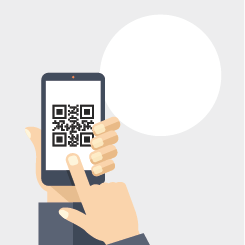 The rise in both healthier and indulgent shopping across traditional and alternative brands has also been spurred by the rise in cooking at home, with consumers looking to innovate and learn.9
The rise in both healthier and indulgent shopping across traditional and alternative brands has also been spurred by the rise in cooking at home, with consumers looking to innovate and learn.9
Similarly, in the beauty industry, consumers are looking for products that promote anti-microbial properties, stress-relief and natural ingredients, such as essential oils, skincare treatments, makeups infused with restorative ingredients, and DIY-at-home kits10, 11, 12 — also exhibiting a greater tendency to experiment with name-brand alternatives.13 As a result of consumer shifts and supply chain issues, generics and startups now compete on a more level playing field with legacy brands in their fight for shelf space and market share.
INNOVATIVE SAMPLING STRATEGIES AND CAMPAIGNS
Responding to these shifts in consumer behavior, CPG companies are coming up with creative ways to drive brand awareness and retain the advantages of sampling — through digital and at-home channels, with methods including contactless entry points such as click-and-collect, QR codes, digital kiosks, mobile apps, and direct-to-consumer sites.
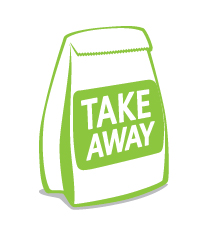
Free Inserts with Online Orders
Even as consumers shop more online — Walmart, for example, has seen an all-time high in downloads for its grocery app14— the majority still continue to make their purchases in-store.15 But consumers are shopping more precisely, minimizing touch points and spending less time browsing in-store.16 In Q2, Target reported a 734% increase in curbside pickup services year-over-year.17 With more customers bypassing the physical shopping experience, companies need to find new ways to get samples into their hands and encourage product discovery and impulse purchases.
One example of a new sampling strategy is Coca-Cola, which released its first energy drink in January 2020. Coca-Cola has transitioned away from an experiential, in-store sampling program and started inserting its energy drinks into online grocery pick-up orders.18
Curbside Sampling & QR Codes
Many large retailers, such as Walmart, Kroger and Giant Eagle, now offer vendors the opportunity to engage with their curbside sampling programs.19, 20 Third-party on-demand delivery services, such as Instacart, also integrate this practice, adding samples from brand partners into customer orders.21 Most recently, Walmart took this strategy a step ahead by partnering with several CPG brands to host a drive-through sampling event on Mother’s Day.22 At this event, consumers could pick up goody bags of snacks and beverages from demo stations, as well as view and, using a QR code, interact more deeply with banners advertising Walmart’s Mother’s Day catalog.
Although QR codes don’t compensate for a full in-person demo experience, they are a convenient educational medium that has the flexibility for dynamic communication. By scanning a QR code, consumers can be directed to additional information, discounts, and virtual assistance. Natural product retailers Native Sun and Raisin Rack are testing a new shelf-tag technology that allows for touchless aisle browsing23 — customers can scan a QR code with their mobile camera to instantly load product information, which suppliers can enhance with content such as educational videos, documents and additional links.
No-Touching Vending
Some companies are replicating the sampling distribution process more closely through zero-touch vending machines. Vengo, the leader in digital kiosk technology, recently developed the first end-to-end sampling solution in response to the pandemic.24 With this system, consumers can interact with the vending machine through their mobile phones, to select a desired product and receive the sample from the dispenser. Coca-Cola, too, updated its Freestyle soda machines in Q2 to allow consumers to select, customize, and dispense drinks by scanning a QR code that displays the soda fountain’s interface directly on the smartphone.25
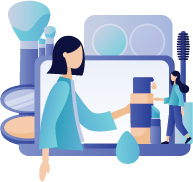
Sampling Platforms and Programs
There are other options, too. Retailers such as Kroger and Target are rolling out virtual sampling programs through EngageLive, a service offered by sampling agency OPEN, which helps CPG companies market their brands through live-streamed demo videos that target shoppers on social media platforms.26, 27
In the beauty industry, sampling is integral to the decision-making process: According to Gartner’s L2 report, 50% of shoppers say that complimentary samples inspire purchases.28 Earlier this year, in May, sampling solutions company Arcade Beauty jumpstarted its Abeo digital sampling platform, which targets qualified customers with in-feed social media ad content, allowing users to select a sample to be delivered directly to their homes.29 Beauty brands can work with the Abeo team to customize their campaigns and manage conversations with consumers.
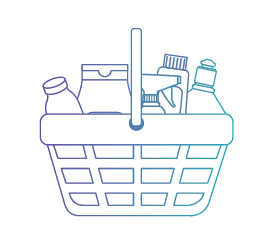
Virtual Try-Ons
Virtual sampling is gaining ground as well. Beauty store chain Ulta Beauty focused on developing its own virtual makeup try-on app GLAMLab, which allows customers to digitally try out 4,000 items using augmented reality (AR) — they can test out makeup to a selfie or a live shot of themselves.30 App usage has increased five-fold during the pandemic, and Ulta has introduced virtual beauty advisors and tutorials to help customers via demonstrations. Taking this a step further, Condé Nast's Allure magazine partnered with Perfect Corp to integrate virtual try-ons into its November 2020 issue, where users can scan a QR code using their smartphones to download Perfect’s YouCam Makeup app and sample products in a live selfie view via AR.
Bypassing Retailers
Many CPG companies are also turning to direct-to-consumer (DTC) websites as a direct revenue stream that bypasses retailers and restaurants, while streamlining their supply chains and improving operating margins — PepsiCo launched Snacks.com and PantryShop.com in response to the pandemic; Kraft Heinz mobilized Heinz to Home.32
DTC allows CPG companies to build direct relationships with their customers, personalize the brand experience and customer service, and run their own sampling programs. Snack brand Pipcorn, for example, pivoted away from an in-store sampling event at Whole Foods for its new line of crackers when the pandemic hit.33 Instead, it decided to give customers the option of sending a free sample to a friend when they purchased products directly from the company website. Both KIND Healthy Snacks and Heinz list offers on their websites for free samples when consumers sign up for subscriptions.31
While shipping product samples incurs costs and limits the types of items that can be sampled, companies looking to deepen relationships with customers and build brand loyalty can consider this method, hand in hand with other innovative strategies.
WHAT LIES AHEAD: POST-PANDEMIC SAMPLING TRENDS
Even after in-store sampling makes a comeback once the pandemic subsides, the diversification of the sampling supply chain and many of the new methods that have emerged in response to the COVID-19 restrictions are likely to stay. Open-packaged, freshly prepared food and shared beauty testers will make way for digital interfacing, and brands will look to meet the consumer along out-of-store paths to purchase, such as click-and-collect, e-commerce, and social media.
The shopper marketing spend will be directed more heavily toward the digital and social spaces. Digital sampling, unlike traditional in-store sampling, has the benefit of ROI trackability, giving brands the ability to better target the right consumers and collect consumer data by tracking their sampling experience from start to finish.34 While passive on-the-spot sampling may fade away, both retail stores and CPG brands now have numerous options to actively target shoppers, build more personal and direct relationships, and provide product information in more ways than ever before.35
Procurement and marketing teams must work together to evaluate the costs associated with the new paradigm. The digitalization of product demonstrations and the safety precautions associated with in-person events will require increased investment. If companies are to promote in stores again, sanitary supplies and masks will be necessary additional costs to conform to the new standards. It could be that food samples need to be offered as full, single-serve sizes to minimize food sharing and open-cup risks. As such, the cost of demonstrations and producing and packaging samples themselves may increase.36
Navigating the changing landscape will not be easy, but there’s a big opportunity here for procurement leaders and creative marketers to build loyal relationships with consumers anytime, anywhere, and stay ahead of the game.
References
- Joan Verdon, “Free Samples, 24-Hour Shopping and Other Things Likely to Disappear as Stores Change in the Wake of The Coronavirus,” U.S. Chamber of Commerce, 1 April 2020. Retrieved 20 November 2020 from https://www.uschamber.com/co/good-company/launch-pad/coronavirus-and-hygiene-affect-sales-techniques
- Nishat Mehta, “Why CPG Brands Shouldn’t Ditch Advertising During The Pandemic,” Forbes, 3 August 2020. Retrieved 23 November 2020 from https://www.forbes.com/sites/forbescommunicationscouncil/2020/08/03/why-cpg-brands-shouldnt-ditch-advertising-during-the-pandemic/?sh=104b37cc58ed
- “Mobile Outdoor Media Tools are Perfect for Product Sampling which Boosts Awareness, Sales, Purchase Propensity – ASAP,” HC Cosmos Ltd. Retrieved 20 November 2020 from http://promobikes.eu/sampling/
- “The Benefits of Product Sampling: Why You Should Do It,” Factory360, 29 December 2015. Retrieved 20 November 2020 from https://factory360.com/the-benefits-of-product-sampling-why-you-should-do-it/
- Paul Hiebert, “With In-Store Sampling on Hold, Brands Get Creative,” Adweek, 7 May 2020. Retrieved 20 November 2020 from https://www.adweek.com/brand-marketing/with-in-store-sampling-on-hold-brands-get-creative/
- “Digital Product Sampling vs. Traditional In-Store Sampling,” Sampler. Retrieved 24 November 2020 from https://sampler.io/blog/digital-product-sampling-vs-traditional-store-sampling?cn-reloaded=1
- “The New Consumer in the New Normal: 5 Ways Procurement Can Help Navigate Change,” GEP, 15 October 2020. Retrieved 23 November 2020 from https://www.gep.com/white-papers/the-new-consumer-in-the-new-normal
- ibid
- Jessi Devenyns, “Consumers Are Eating at Home More, but Some Are Getting Tired of It,” Food Dive, 15 September 2020. Retrieved 20 November 2020 from https://www.fooddive.com/news/consumers-are-eating-at-home-more-but-some-are-getting-tired-of-it/585125/
- Amanda Lim, “Taking on Tea Tree Oil? Antimicrobial Properties of MāNuka Oil Expected To Raise Its Profile in Cosmetics Post-Pandemic,” Cosmeticsdesign-asia.com, 18 August 2020. Retrieved 20 November 2020 from https://www.cosmeticsdesign-asia.com/Article/2020/08/18/Antimicrobial-properties-of-manuka-oil-expected-to-raise-its-profile-in-cosmetics-post-pandemic?utm_source=copyright&utm_medium=OnSite&utm_campaign=copyright
- Premium Beauty News, “Natural Cosmetic Ingredients To Gain Popularity in Post-COVID-19 Era,” Premiumbeautynews.com, 1 June 2020. Retrieved 20 November 2020 from https://www.premiumbeautynews.com/en/natural-cosmetic-ingredients-to,16748#
- Jessica Schiffer, “The Beauty Trends Customers Are Buying During COVID-19,” Vogue Business, 12 August 2020. Retrieved 20 November 2020 from https://www.voguebusiness.com/beauty/the-beauty-trends-customers-are-buying-during-covid-19#
- Deanna Utroske, “Coronavirus Impact: What the Market Research Says,” Cosmeticsdesign.com, 20 April 2020. Retrieved 20 November 2020 from https://www.cosmeticsdesign.com/Article/2020/04/20/Coronavirus-Impact-what-market-research-says-about-beauty#
- Jessica Dumont, “Walmart’s Grocery App Downloads Reach Record Highs,” Grocery Dive, 13 April 2020. Retrieved 20 November 2020 from https://www.grocerydive.com/news/walmarts-grocery-app-downloads-reach-record-highs/575855/
- Annie Palmer and Melissa Repko, “How the Coronavirus Pandemic Helped Convince Grocery Chains to Experiment With New Tech,” CNBC, 6 September 2020. Retrieved 23 November 2020 from https://www.cnbc.com/2020/09/06/how-coronavirus-convinced-grocery-chains-to-experiment-with-new-tech-.html
- Laura Reiley, “Bigger Hauls, Fewer Choices: How the Pandemic Has Changed Our Grocery Shopping Habits Forever,” The Washington Post, 2 September 2020. Retrieved 23 November 2020 from https://www.washingtonpost.com/road-to-recovery/2020/09/01/grocery-shopping-coronavirus-impact/
- Natalie Gagliordi, “Target’s Q2 Digital Sales Soar, Curbside Pickup Services Up Over 700%,” ZDNet, 19 August 2020. Retrieved 23 November 2020 from https://www.zdnet.com/article/targets-q2-digital-sales-soar-curbside-pickup-services-up-over-700/#:~:text=Target's%20Q2%20digital%20sales%20soar%2C%20curbside%20pickup%20services%20up%20over%20700%25,-The%20retailer%20also&text=Specifically%2C%20sales%20through%20Target's%20curbside,%25%20year%2Dover%2Dyear.
- “Get Creative With In-Store Sampling,” NACS, May 13, 2020. Retrieved 23 November 2020 from https://www.convenience.org/Media/Daily/2020/May/13/3-Get-Creative-With-In-Store-Sampling_Marketing
- “Walmart® Sampling Solutions,” Brand Connections Sampling Solutions. Retrieved 23 November 2020 from http://www.open-sampling.com/walmart
- “Giant Eagle® Curbside Express Sampling,” Brand Connections Sampling Solutions. Retrieved 23 November 2020 from http://www.open-sampling.com/giant-eagle-curbside-express-sampling
- Krishna Thakker, “Retailers Want to Bring Back Sampling, but With Modifications,” Grocery Dive, 23 June 2020. Retrieved 23 November 2020 from https://www.grocerydive.com/news/retailers-want-to-bring-back-sampling-but-with-modifications/580272/
- “Breaking: Walmart Debuts a New COVID-Friendly Take on Retailtainment,” Field Agent, 11 May 2020. Retrieved 23 November 2020 from https://blog.fieldagent.net/walmart-debuts-a-new-covid-friendly-take-on-retailtainment
- Mark Hamstra, “Natural Retailers Test ‘Touchless Browsing’ Tech,” New Hope Network, 21 Jul 2020. Retrieved 23 November 2020 from https://www.newhope.com/retail-and-distribution/natural-retailers-test-touchless-browsing-tech
- “Vengo Offers End-to-End Contactless Sampling and Transactions,” GlobeNewswire, 29 April 2020. Retrieved 23 November 2020 from https://www.globenewswire.com/news-release/2020/04/29/2024285/0/en/Vengo-Offers-End-to-End-Contactless-Sampling-and-Transactions.html
- “Coca-Cola Rolls Out New No-Touch Soda Machine,” NACS, 14 July 2020. Retrieved 23 November 2020 from https://www.convenience.org/Media/Daily/2020/Jul/14/2-Coca-Cola-New-No-Touch-Soda-Machine_Marketing
- “Target® Marketing & Sampling Solution,” Brand Connections Sampling Solutions. Retrieved 23 November 2020 from http://www.open-sampling.com/target-sampling-solutions
- “Kroger® Sampling Solutions,” Brand Connections Sampling Solutions. Retrieved 23 November 2020 from http://www.open-sampling.com/kroger-sampling-solutions
- “Hygienic Beauty Trial for a Post-COVID-19 Retail World,” Cosmetic Executive Women, 20 May 2020. Retrieved 24 November 2020 from https://www.cew.org/beauty_news/hygienic-beauty-trial-for-a-post-covid-19-retail-world/
- Katie Nichol, “Arcade Beauty Launches Abeo Digital Sampling Initiative in Europe,” Luxe Packaging Insight, 5 June 2020. Retrieved 24 November 2020 from https://www.luxepackaginginsight.com/article/arcade-beauty-launches-its-abeo-digital-sampling-platform-in-europe.56231
- Parija Kavilanz, “No Testers, No Problem: Ulta and Sephora Have a New Take on ‘Try Before You Buy’,” CNN Business, 18 June 2020. Retrieved 24 November 2020 from https://edition.cnn.com/2020/06/18/business/ulta-sephora-virtual-makeovers/index.html
- Robert Williams, “Allure Designs Holiday Shopping Issue Around Virtual Try-On Experiences,” Retails Dive, 14 October 2020. Retrieved 24 November 2020 from https://www.retaildive.com/news/allure-designs-holiday-shopping-issue-around-virtual-try-on-experiences/587034/?utm_source=Sailthru&utm_medium=email&utm_campaign=Issue:%202020-10-15%20Retail%20Dive:%20Tech%20%5Bissue:30262%5D&utm_term=Retail%20Dive:%20Tech
- Brad Birnbaum, “What DTC CPG Brands Need To Know About Meeting Today’s Customer Service Demands,” Forbes, 15 June 2020. Retrieved 24 November 2020 from https://www.forbes.com/sites/bradbirnbaum/2020/06/15/what-dtc-cpg-brands-need-to-know-about-meeting-todays-customer-service-demands/?sh=7e65fe5e7b83
- “Get Creative With In-Store Sampling,” NACS, May 13, 2020. Retrieved 23 November 2020 from https://www.convenience.org/Media/Daily/2020/May/13/3-Get-Creative-With-In-Store-Sampling_Marketing
- “Digital Product Sampling vs. Traditional In-Store Sampling,” Sampler. Retrieved 24 November 2020 from https://sampler.io/blog/digital-product-sampling-vs-traditional-store-sampling?cn-reloaded=1
- Chris Ambarian, “How Will Sampling and In-Store Demos Look Post-COVID?” Promomash, 11 June 2020. Retrieved 24 November 2020 from https://blog.promomash.com/product-demos-2.0-how-demos-may-look-post-covid-19
- ibid
